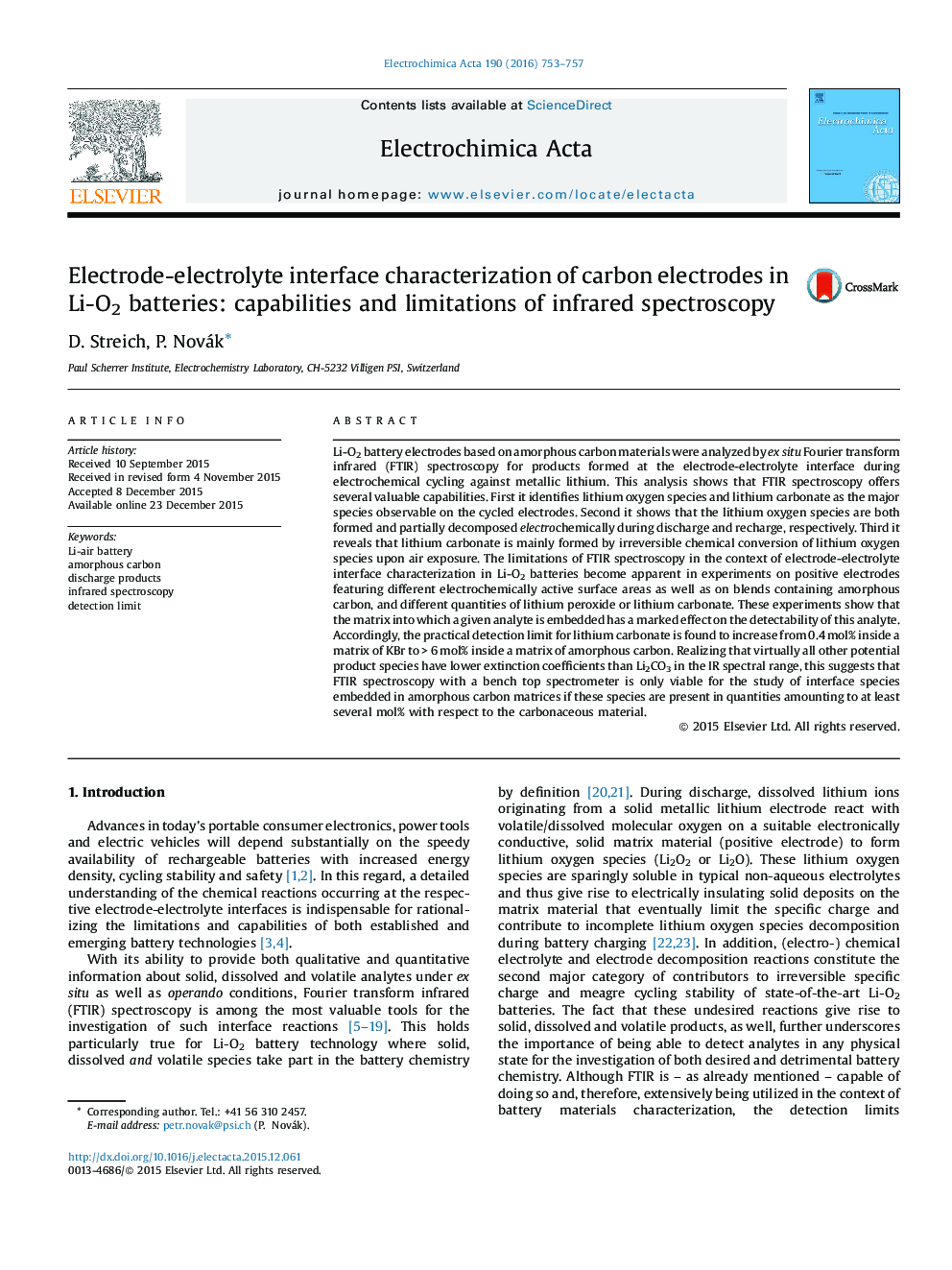| کد مقاله | کد نشریه | سال انتشار | مقاله انگلیسی | نسخه تمام متن |
|---|---|---|---|---|
| 6609590 | 459549 | 2016 | 5 صفحه PDF | دانلود رایگان |
عنوان انگلیسی مقاله ISI
Electrode-electrolyte interface characterization of carbon electrodes in Li-O2 batteries: capabilities and limitations of infrared spectroscopy
دانلود مقاله + سفارش ترجمه
دانلود مقاله ISI انگلیسی
رایگان برای ایرانیان
کلمات کلیدی
موضوعات مرتبط
مهندسی و علوم پایه
مهندسی شیمی
مهندسی شیمی (عمومی)
پیش نمایش صفحه اول مقاله

چکیده انگلیسی
Li-O2 battery electrodes based on amorphous carbon materials were analyzed by ex situ Fourier transform infrared (FTIR) spectroscopy for products formed at the electrode-electrolyte interface during electrochemical cycling against metallic lithium. This analysis shows that FTIR spectroscopy offers several valuable capabilities. First it identifies lithium oxygen species and lithium carbonate as the major species observable on the cycled electrodes. Second it shows that the lithium oxygen species are both formed and partially decomposed electrochemically during discharge and recharge, respectively. Third it reveals that lithium carbonate is mainly formed by irreversible chemical conversion of lithium oxygen species upon air exposure. The limitations of FTIR spectroscopy in the context of electrode-electrolyte interface characterization in Li-O2 batteries become apparent in experiments on positive electrodes featuring different electrochemically active surface areas as well as on blends containing amorphous carbon, and different quantities of lithium peroxide or lithium carbonate. These experiments show that the matrix into which a given analyte is embedded has a marked effect on the detectability of this analyte. Accordingly, the practical detection limit for lithium carbonate is found to increase from 0.4Â mol% inside a matrix of KBr to > 6Â mol% inside a matrix of amorphous carbon. Realizing that virtually all other potential product species have lower extinction coefficients than Li2CO3 in the IR spectral range, this suggests that FTIR spectroscopy with a bench top spectrometer is only viable for the study of interface species embedded in amorphous carbon matrices if these species are present in quantities amounting to at least several mol% with respect to the carbonaceous material.
ناشر
Database: Elsevier - ScienceDirect (ساینس دایرکت)
Journal: Electrochimica Acta - Volume 190, 1 February 2016, Pages 753-757
Journal: Electrochimica Acta - Volume 190, 1 February 2016, Pages 753-757
نویسندگان
D. Streich, P. Novák,